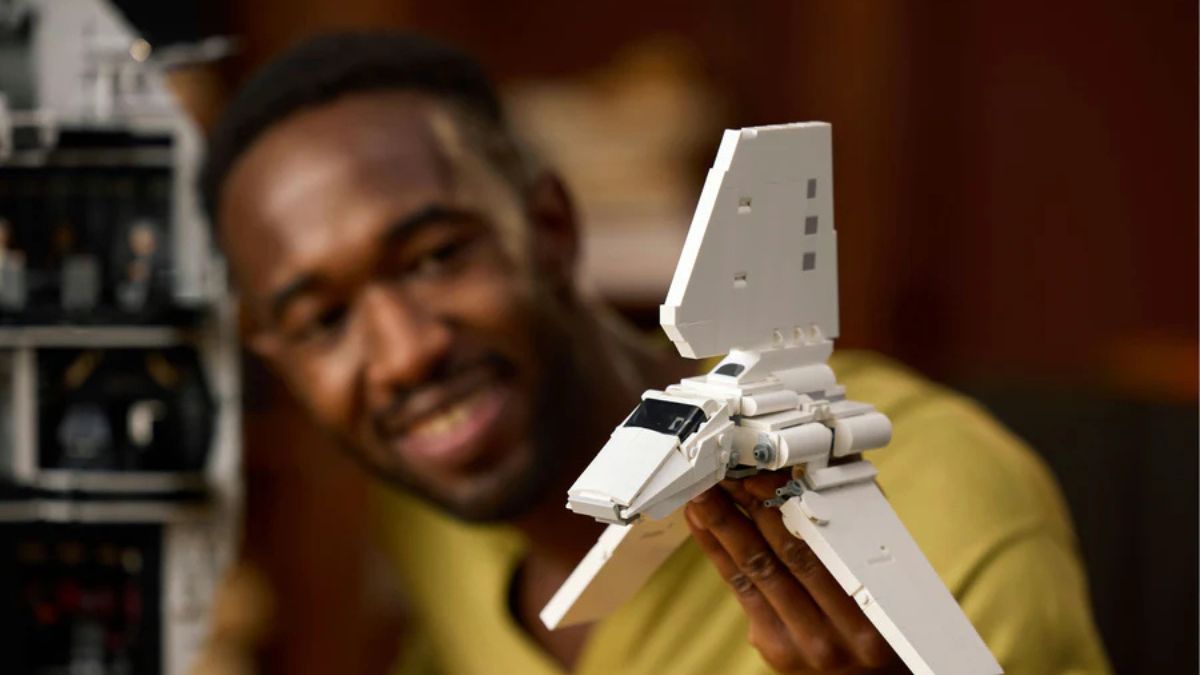HOME
Comprehensive Guide to Senior Living Options and Choices

Did you know that the US senior living market size is projected to grow to $118.17 billion by 2028? This shows the growing demand for senior living options as the population ages.
Choosing the right living situation for aging loved ones can be overwhelming. There are many senior living options to consider. It’s important to understand the different types of services and communities.
Whether your loved ones need help with daily tasks or want to be part of an active community, this guide will help you find the best choice for them. Continue reading to learn more.
Understanding the Different Senior Living Options
When it comes to senior living options, the variety can be overwhelming. Here are the most common types of living arrangements available:
Independent Living
Independent living is great for active seniors who can handle daily tasks. Residents have their apartments and access to amenities like meals and activities. It’s also a community where they can enjoy companionship.
Assisted Living
Assisted living is for seniors who need help with daily tasks. It offers personalized care while allowing for independence. Services include help with medication, bathing, and meal preparation.
Nursing Homes
Nursing homes are for seniors with serious health issues or disabilities. They provide 24/7 nursing care and rehabilitation services. Help with daily living tasks is also available.
Memory Care
Memory care facilities help individuals with Alzheimer’s or dementia. They provide secure environments and programs focused on cognitive health. Safety is a top priority in these facilities.
Evaluating Each Senior Living Option
Evaluating senior living options is important to find the best fit for your loved one. Consider these factors:
Individual Health Needs
Your loved one’s health needs play a big role in choosing the right living arrangement. An active senior may do well in independent living. A person with more health concerns may need 24/7 nursing care.
Lifestyle Preferences
Lifestyle preferences are important when choosing a living arrangement. Some seniors enjoy social activities, while others prefer independence. It’s essential to consider what your loved one values most.
Talking to your loved one about their interests will help guide your decision. Their preferences can reveal what type of living situation suits them best. These discussions are key to finding the right fit.
For instance, many active seniors prefer options that offer active lifestyles, such as independent living for active seniors. This option lets them maintain their routines. It also offers a community where they can stay active and social.
Financial Considerations
Cost is an important factor when choosing a senior living arrangement. Some options are more affordable than others. Understanding what each community includes in its fees is essential.
It’s also helpful to explore financial assistance options. Medicaid, Medicare, and veterans’ benefits can provide support. These programs can help reduce the financial burden.
Be sure to investigate what help is available for your loved one. Knowing the costs and financial resources can guide your decision. This will ensure that you choose a solution that fits your budget.
A Thoughtful Approach to Senior Living Choices
Choosing the right senior living option takes careful thought and compassion. Consider your loved one’s health, lifestyle, and finances to make an informed choice. This ensures their comfort and well-being.
Your loved one’s happiness and quality of life should always come first. Start by exploring different communities to find the best fit. Taking action today will help meet your family’s needs.
Did you find this blog post helpful? If so, feel free to explore more of our blog!
HOME
The MyBrickHouse LEGO Buyer’s Experience

Where LEGO Becomes a Feeling, Not Just a Purchase
At MyBrickHouse, LEGO is more than a box of bricks. It is imagination, nostalgia, creativity, and comfort, something that brings families closer, inspires collectors, and gives builders a space to express themselves. MyBrickHouse exists for those who see LEGO not as a toy, but as a moment they want to relive, share, or treasure.
Helping Every Builder Find Their Story
-
A Place Where the Right Set Finds You
MyBrickHouse organizes its collections with care so every visitor can find a set that speaks to them whether it’s the thrill of superheroes, the calm of architecture builds, or the excitement of vehicles and planes. It feels less like browsing and more like discovering something meant for you.
-
Descriptions That Build Confidence
Each product page offers clear and honest details, complexity levels, part counts, recommended ages, and meaningful highlights. Whether you’re picking a child’s first LEGO set or adding to a long-growing collection, the information helps you choose with both clarity and excitement.
-
Trust You Can Feel
Every LEGO set at MyBrickHouse is genuine, sealed, and responsibly sourced. This is a place where buyers never wonder about authenticity because trust is built into every listing.
Created for Every Kind of LEGO Lover
-
For Parents Who Want to Create Memories
Choosing a LEGO set for a child is not just a purchase, it is giving them a moment of wonder. MyBrickHouse highlights sets that spark creativity, build confidence, and support safe, skill-building play. Every recommendation feels thoughtful and intentional.
-
For Collectors Who See LEGO as Legacy
Collectors find rare releases, new arrivals, and special editions presented in a way that makes browsing exciting. MyBrickHouse respects the passion behind collecting the thrill of the hunt, the satisfaction of completion.
-
For Hobby Builders Who Build for Peace and Joy
Casual builders can explore sets based on mood, style, and complexity. Whether it’s a relaxing weekend build or a challenging creative project, the platform makes the search easy and enjoyable.
-
For Gift Buyers Wanting Something Meaningful
LEGO gifts hold emotional celebrations, thank-yous, and memories. MyBrickHouse helps buyers choose sets that genuinely fit the moment, making their gesture thoughtful and personal.
A Platform That Understands LEGO as Emotion
-
Browsing That Feels Natural
MyBrickHouse is laid out in a way that feels gentle, intuitive, and easy to follow. Each category invites exploration rather than overwhelming you.
-
Choices That Support Every Skill Level
Whether you are just beginning your LEGO journey or have built for years, MyBrickHouse makes sure you find sets that match your comfort and excitement.
-
A Constant Stream of Inspiration
With new themes, trending releases, and fresh collections, the platform keeps the experience alive, always offering something new to look forward to.
-
Support That Feels Human
MyBrickHouse assists buyers with genuine care. Whether asking about age suitability, shipping, or recommendations, users receive clear, timely, and thoughtful support.
Where the LEGO Journey Finds Its Home
lego.MyBrickHouse.com is more than a store, it is a space built for people who feel deeply connected to LEGO. Through trustworthy products, meaningful descriptions, and a warm, organized browsing experience, it nurtures the joy behind every build.
For parents, collectors, hobbyists, and gift seekers, MyBrickHouse becomes a place where LEGO dreams begin, grow, and continue one brick at a time.
HOME
Waterproof RGB LED Strips: High-Performance Lighting Built for Rain, Heat, and Humidity

Introduction
Lighting is a critical element in creating functional, safe, and visually appealing spaces. Whether you’re illuminating outdoor patios, gardens, commercial walkways, or architectural features, you need lighting solutions that can withstand environmental challenges. This is where Waterproof RGB LED Strip shines. Designed for durability, versatility, and high performance, these LED strips are perfect for applications exposed to rain, heat, or humidity. Paired with a reliable Waterproof Power Supply, they offer long-lasting, vibrant illumination for both residential and commercial projects.
What Are Waterproof RGB LED Strips?
Waterproof RGB LED Strips are LED lighting solutions encased in a protective layer that shields the LEDs from moisture, dust, and external environmental factors. The “RGB” feature means they can produce red, green, and blue colors, allowing users to mix and create millions of colors for mood lighting, accent lighting, or dynamic visual effects.The waterproof design makes these LED strips ideal for outdoor installations. Whether you want to highlight your garden path, illuminate a swimming pool edge, or create colorful lighting for a commercial outdoor space, these LED strips provide reliable performance even under challenging weather conditions.
Benefits of Waterproof RGB LED Strips
Waterproof RGB LED Strips offer multiple advantages over traditional LED lighting. Their main benefit is resistance to water, dust, and heat, which ensures consistent performance regardless of environmental conditions. These strips are energy-efficient, consume minimal electricity, and generate less heat compared to conventional lighting, which makes them both cost-effective and safe.
When paired with a Waterproof Power Supply these LED strips operate smoothly, maintain consistent brightness, and avoid potential damage caused by voltage fluctuations or moisture. This combination ensures a long-lasting and reliable lighting solution for any environment.
Applications of Waterproof RGB LED Strips
The applications of Waterproof RGB LED Strips are vast and varied. In residential settings, they are perfect for outdoor patios, balconies, gardens, and pool areas. Their color-changing capability allows homeowners to create dynamic lighting moods for parties, relaxing evenings, or seasonal decorations.
In commercial spaces, these LED strips are widely used in hotels, restaurants, bars, retail stores, and event venues. They can highlight architectural features, illuminate pathways, or create eye-catching decorative effects. Because they are waterproof and resistant to humidity and heat, businesses can rely on them for long-term performance without frequent replacements or maintenance.
Choosing the Right Waterproof Power Supply
A Waterproof Power Supply is essential for ensuring the safety and efficiency of outdoor LED installations. It protects the system from electrical hazards caused by moisture, rain, or high humidity, and guarantees consistent voltage to the LED strips. Selecting a high-quality waterproof power supply ensures that your Waterproof RGB LED Strips operate at peak performance and maintain their vibrant colors and brightness over time.
When choosing a power supply, consider the total wattage of your LED strips, the IP rating for waterproofing, and the reliability of the manufacturer. Investing in a high-quality power supply prevents malfunctions, extends the life of the LEDs, and provides peace of mind for both residential and commercial installations.
Why Waterproof RGB LED Strips Are Worth the Investment
Investing in Waterproof RGB LED Strips is not just about lighting; it’s about durability, aesthetics, and safety. Their high-performance design ensures that your outdoor spaces remain beautifully illuminated in all weather conditions. Unlike standard LED strips, waterproof versions resist damage from water and humidity, making them ideal for long-term installations.
Paired with a reliable Waterproof Power Supply, these LED strips provide consistent, vibrant, and energy-efficient lighting. For contractors, designers, and homeowners alike, choosing high-quality waterproof LED strips ensures that outdoor spaces look impressive and function reliably year-round.
Conclusion
Waterproof RGB LED Strips are the ultimate solution for high-performance outdoor lighting. Designed to withstand rain, heat, and humidity, these LED strips provide versatile, energy-efficient, and long-lasting illumination for residential and commercial projects. By pairing them with a quality Waterproof Power Supply, you ensure safety, consistency, and vibrant colors for years to come.Whether you are lighting up a garden, a patio, a commercial façade, or a pool area, investing in waterproof LED solutions guarantees that your spaces remain visually stunning, functional, and reliable under any environmental condition.
HOME
Rehabilitation Services: Helping Seniors Regain Independence

The Importance of Independence for Seniors
Maintaining autonomy is a cornerstone of well-being for older adults. Being able to make daily decisions, pursue hobbies, and manage personal routines contributes to both mental and emotional health. Independence fosters confidence, reduces stress, and helps seniors feel in control of their own lives, which can positively impact overall quality of life. Even small acts, like preparing meals or going for a walk, provide a sense of purpose and accomplishment that is essential for maintaining dignity as one ages.
For seniors requiring additional support, selecting the proper care environment can preserve their sense of autonomy while ensuring safety. A skilled nursing home facility Missouri, for example, balances professional medical care with opportunities for residents to engage in meaningful activities and maintain daily routines. This approach enables seniors to receive necessary assistance without compromising their independence or personal autonomy.
Core Components of Rehabilitation: Physical, Occupational, and Speech Therapies
Physical Therapy
Physical therapy aims to restore mobility, improve balance, and enhance strength, particularly for seniors. Custom programs often follow surgeries such as hip or knee replacements, focusing on targeted exercises to expedite recovery and prevent future injuries. Therapists employ various techniques, including stretching, strength exercises, and balance training, to alleviate pain and address mobility challenges, thereby fostering a more active and secure lifestyle for seniors who engage in activities such as walking, gardening, or light sports.
Occupational Therapy
Occupational therapy helps seniors relearn practical skills and daily activities, such as dressing, bathing, and meal preparation, by utilizing adaptive techniques and devices to enhance their independence. Therapists assess and modify environments to enhance safety and accessibility, fostering independence and minimizing accident risks.
Speech Therapy
Speech therapy is essential for individuals with speech or swallowing challenges due to strokes, neurological disorders, or surgery. Therapists create tailored exercises to enhance communication and ensure safe swallowing, thereby improving quality of life and social engagement. Support often includes language exercises, memory training, and speech clarity strategies, with more serious cases benefiting from augmentative and alternative communication tools.
How Technology Is Transforming Rehabilitation
Innovative technologies, such as robotic exoskeletons, motion sensors, and wearable fitness trackers, are significantly enhancing rehabilitation for seniors. These tools offer safe guided movements, real-time feedback, and motivating virtual reality environments, thereby improving rehabilitation outcomes and enhancing senior engagement. Moreover, video-based therapy and telehealth services expand accessibility for seniors in remote areas, allowing them to receive care from home.
The Role of Recreational Activities in Recovery
Recreational activities play a crucial role in senior rehabilitation by complementing traditional therapy. Engaging in hobbies such as gardening, music, or crafts helps alleviate loneliness and depression while promoting gentle physical activity. Activities such as art classes and music therapy foster fine motor skills and cognitive engagement. Group activities enhance social interaction and provide a sense of connection and accomplishment, ultimately improving mental health, strengthening social bonds, and boosting overall wellness, thereby creating an environment conducive to recovery.
Adapting Homes for Independent Living
Simple home modifications for seniors, such as grab bars, ramps, and non-slip flooring, can significantly improve safety and accessibility during rehabilitation. Other enhancements, including wider doorways, better lighting, stair lifts, and accessible bathrooms, are also beneficial. Occupational therapists often suggest personalized adjustments to facilitate mobility and prevent falls, thereby reducing anxiety for both seniors and their families by ensuring a secure living environment.
Community-Based Rehabilitation and Support Programs
Community-based rehabilitation programs, such as PACE, support seniors by providing medical care, therapy, transportation, and social events, thereby promoting independence and reducing hospitalizations. These initiatives address physical, social, and psychological needs, while local resources enhance accessibility and encourage engagement through volunteer work and educational events, thus preventing isolation.
Conclusion
Rehabilitation services are crucial for seniors who wish to maintain their independence. Through the strategic combination of traditional therapies, technological innovations, recreational activities, home modifications, and supportive community programs, older adults are empowered to overcome challenges and lead fulfilling, self-reliant lives. As the field of rehabilitation continues to advance and adapt, more seniors will have the opportunity to enjoy active, independent years with the dignity they deserve.
-

 HEALTH2 years ago
HEALTH2 years agoIntegrating Semaglutide into Your Weight Loss Plan: A Practical Guide
-

 HOME IMPROVEMENT2 years ago
HOME IMPROVEMENT2 years agoHow to Choose the Perfect Neutral Area Rug for Every Room
-

 LAW1 year ago
LAW1 year agoTeenage Drivers and Car Accidents in California: Risks and Parental Liability
-

 CONSTRUCTION1 year ago
CONSTRUCTION1 year agoConstruction Site Safety Regulations in New York and Your Rights as a Worker
-

 LAW1 year ago
LAW1 year agoPost-Divorce Considerations in California: Modifications and Long-Term Planning
-

 HOME2 years ago
HOME2 years agoSandra Orlow: The Teen Model Who Captivated the Internet
-

 FINANCE1 year ago
FINANCE1 year agoDigital Asset Management in Florida Estate Planning
-

 LAW1 year ago
LAW1 year agoKentucky’s School Football: Concussions, Injuries, and Legal Options








